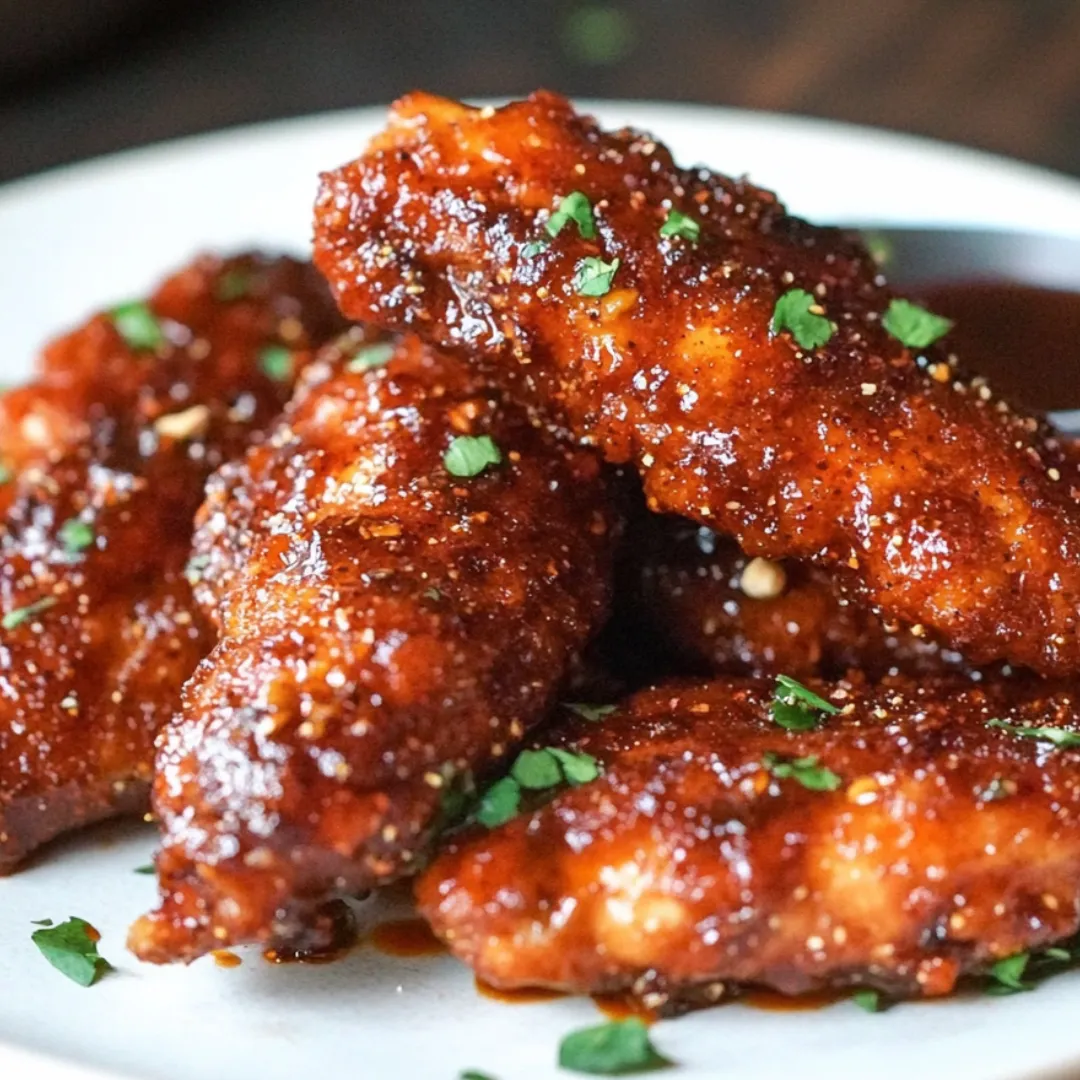 Save
Save
The first time I made these Spicy Thai Chicken Tenders, it was a whim fueled by craving something crispy, saucy, and just a little fiery. I remember the sizzle of the oil mingling with the crackle of the panko crust as each tender hit the pan — and how that sauce, sticky and rich with peanut butter and ginger, turned simple chicken into a quick celebration on the plate.
I stumbled upon the magic of mixing peanut butter directly into the spicy sauce while experimenting with a different Thai-inspired recipe years ago. It’s that creamy surprise that transforms ordinary fried tenders into something unforgettable.
Essential Ingredients
- Chicken breast tenderloins: the perfect size and tenderness to crisp up quickly and stay juicy
- Panko breadcrumbs: lighter and crispier than regular breadcrumbs, essential for that perfect crunch
- Red pepper flakes: add a subtle heat that wakes up the palate; adjust to taste or omit if you’re heat-sensitive
- Sriracha: balances spicy and tangy notes; I usually start moderate and tweak to suit my spice tolerance
- Creamy peanut butter: choose a smooth, natural variety for richer flavor without overpowering sweetness
- Fresh ginger: freshly grated, this gives the sauce its bright, aromatic bite
When shopping, look for chicken without added solutions to keep the flavor pure. For ginger, avoid any that’s shriveled or overly dry; a firm, knobby root signals freshness.
Cooking Process
- Crisping the Chicken –
- Heat your oil to medium so it’s hot enough to sizzle when the tenders meet it but not so hot they burn before cooking through. The panko mixed with red pepper flakes forms that golden, crackly shell that holds in the juiciness.
- Crafting the Sauce –
- Stirring brown sugar, soy, garlic, ginger, peanut butter, and sriracha together lets each ingredient meld while simmering. Adding cornstarch slurry thickens it just so, making it cling lovingly to every bite.
- Saucing with Care –
- Dipping fried tenders gently into the sauce instead of tossing them keeps the crust intact but generously coats each piece in flavor, making the final dish both crispy and saucy — the best of both worlds.

Recipe Highlights
One time, I tried tossing the tenders directly into the sauce while they were still in the pan and ended up with shredded crust instead of crunchy bites. Since then, I always dip them individually, which keeps that satisfying texture intact.
Flavor Variations
If you want to mellow the heat, swap out sriracha for a milder chili garlic sauce or omit red pepper flakes. For extra sweetness, a drizzle of honey or maple syrup added to the sauce takes it into deliciously sticky territory. On lazy days, swap frying for oven-baking at 425°F (220°C) for about 15 minutes, turning halfway, which still crisps nicely with less oil.
Make-Ahead Strategies
Bread and uncover the tenders up to an hour ahead, refrigerating them before frying. The sauce can be prepared in advance and gently reheated, whisking in extra water to loosen if it thickens too much.
Cooking Secrets
- Maintain consistent oil temperature; too hot burns the coating, too cool leaves it soggy. Use a thermometer if you have one.
- Mix the panko and red pepper flakes evenly for subtle heat and crunch in every bite.
- Whisk the cornstarch slurry thoroughly before adding to the sauce to prevent lumps and ensure a smooth shine.

Frequently Asked Recipe Questions
- → What type of chicken is best for this dish?
Chicken breast tenderloins work best as they cook quickly and maintain tenderness, perfect for even frying.
- → How can I adjust the spice level?
Reduce or increase the amount of sriracha and red pepper flakes according to your preferred heat intensity.
- → Can I bake the chicken tenders instead of frying?
Yes, baking at a high temperature can achieve a crispy result, though frying provides the crunchiest texture.
- → What is the role of peanut butter in the sauce?
Peanut butter adds a creamy texture and subtle nutty flavor that balances the sauce's heat and sweetness.
- → How do I prevent the tenders from becoming greasy?
Maintain the oil temperature and avoid overcrowding the skillet; briefly draining on paper towels also helps.
